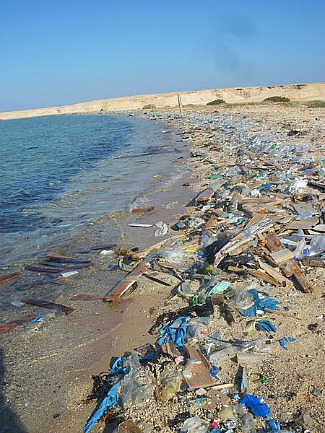Following the trace of trace elements

The great impact of trace elements on natural resources and environment quality justifies the increasing interest in monitoring them through chemical analysis. Soils are the water and nutrient reservoir of terrestrial ecosystems and an irreplaceable source for food production. Soil trace element pollution is a problem arising from different causes in several areas of the world. E.g. in Europe there are a 40 000 km2 of soils polluted with heavy metals.
The trace elements arsenic, cadmium, chromium, copper, mercury and lead are among the elements that cause the greatest environmental impact and carry the highest risk for human health. Thus, studies which monitor bioaccumulation in soils and sediments of these elements are essential to investigate the actual impact of trace elements on environmental pollution. Adequate analytical methods are essential to study the trace element contents of soils and sediments of large areas where large amount of samples are needed to characterize the presence and abundance of trace elements and to reach significant conclusions.
Until present the techniques based on mass spectroscopy with atomization by inductively coupled plasma (ICP-MS) have been the technique of choice to achieve better analytical figures of merit than with the atomic absorption methods. Although electrothermal atomic absorption spectrometry (ETAAS) has also been employed in trace element determination, it was often very disrupted by multiple physical and/or chemical reactions and effects in the atomizer that limited its use. The main constraint to its use have been the influence of sample matrix on the absorption signal in the analytical line of the analyte and the reactions between the analyte and the chemical components of the sample matrix in the atomizer making it difficult to reach adequate detection limits.
In the last few years these main constraints of spectroscopy absorption methods have been overcome by progressively incorporating improvements that have enhanced the capacity of ETAAS to compete with ICP-MS in terms of sensitivity, while maintaining the advantages of absorption techniques such as the easy possibility of performing analytical determination using solid samples. These advances have increased the possibilities and the utility of ETAAS for trace element determination at mg L-1 levels in difficult matrices such as soils and sediments, providing greater accuracy and precision, lower economic cost and easier sample pre-treatment than other methods.
Among these improvements at spectrometer level, there is the use of new and more efficient use of modifiers during the temperature program of the atomizer. This allows thermal analyte stabilization and thermal separation of analyte from the rest of the sample matrix components during the pyrolysis stage. The modifiers can be applied together with the sample into the atomizer, but in recent years the use of atomizers coated with modifiers have been successfully applied to the analysis of real samples in ETAAS leading to better results.
To these improvements we must add others such as the new designs of atomizers, the analyte preconcentration methods at atomizer level, and overall the new systems of background correction, the new light sources and the use of detectors with more sensitivity. These last three improvements have permitted concomitantly the implementation of high resolution continuum source ETAAS (HR-CS ETAAS) that opens the possibility of the determination of several elements at once. Moreover, they facilitate solid sample determination avoiding the sample pre-treatment process of matrix destruction thus diminishing the possibilities of sample contamination. These new devices achieve a much better background correction. All these improvements allow to speed up the analytical process and to enhance its precision, accuracy and detection limit power. Moreover, the classical methods did not allow the simultaneous determination of more than one element.
To the improvements in the spectrophotometers we must also add the advances in sample pre-treatments. Among them, we must highlight the new generations of flux injection analytical (FIA) systems, and the new polymers used in the liquid/solid or liquid/liquid extraction processes. These new polymers allow to concentrate the analyte or to separate it from the matrix residuals with great efficiency and recovery. All these processes are conducted before the sample introduction in the spectrophotometer, raising the sensitivity, reducing sample contamination and improvising the detection limits.
References
"Electrothermal atomic absorption spectometry to determine As, Cd, Cr, Cu, Hg, and Pb in soils and sediments: a review and perspectives". Sardans J., Montes F., Peñuelas J. 2011. Soil and sediment contamination 20: 447-491.


